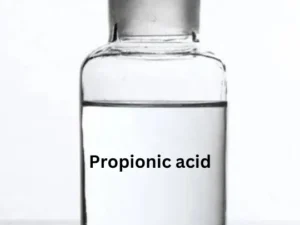Description
Chlorobenzene: A Versatile Chemical with a Wide Range of Applications
Chlorobenzene, a colorless and flammable liquid with a distinctive almond-like odor, is an important aromatic hydrocarbon with a broad range of industrial applications. Its chemical formula is C6H5Cl, indicating a benzene ring with a single chlorine atom attached. This seemingly simple modification to the benzene structure imbues chlorobenzene with properties that make it a valuable building block in the synthesis of various chemicals, as well as a useful solvent and intermediate in numerous processes.
Production and Properties:
Chlorobenzene is primarily produced in large quantities through the chlorination of benzene. This process, typically catalyzed by ferric chloride, involves the substitution of a hydrogen atom on the benzene ring with a chlorine atom. The reaction produces chlorobenzene along with byproducts like dichlorobenzene and other polychlorinated benzenes.
Key physical properties of chlorobenzene include:
- Appearance: Colorless liquid
- Odor: Almond-like
- Solubility: Insoluble in water, soluble in organic solvents
- Density: Greater than water
- Boiling Point: 132 °C (270 °F)
These properties, combined with its relative stability and ease of handling, contribute to its widespread use in various industrial sectors.
Applications in Chemical Synthesis:
Perhaps the most significant application of chlorobenzene lies in its role as an intermediate in the synthesis of a vast array of chemicals. Some notable examples include:
- DDT (Dichlorodiphenyltrichloroethane): Although now largely restricted due to environmental concerns, chlorobenzene was historically a crucial precursor in the production of the insecticide DDT.
- Nitrochlorobenzenes: Nitration of chlorobenzene leads to nitrochlorobenzenes, which are used in the manufacture of dyes, pesticides, and pharmaceuticals.
- Aniline: Chlorobenzene can be converted to aniline, a key precursor in the production of dyes, polymers, and pharmaceuticals.
- Phenol: In the past, chlorobenzene was used in the Dow process for the industrial synthesis of phenol. While other methods are now more prevalent, the Dow process remains historically significant.
- Herbicides: Chlorobenzene derivatives are used in the production of various herbicides, playing a role in agriculture and weed control.
Other Uses:
Beyond its role in chemical synthesis, chlorobenzene finds application in several other areas:
- Solvent: Due to its ability to dissolve a wide range of organic compounds, chlorobenzene is used as a solvent in various industrial processes, including the production of paints, varnishes, and degreasers.
- Heat Transfer Fluid: In certain specialized applications, chlorobenzene has been used as a heat transfer fluid due to its relatively high boiling point and thermal stability.
- Manufacturing Intermediate: Its stable aromatic ring and reactive chlorine atom make it a versatile intermediate in the manufacture of rubber chemicals, adhesives, and other specialty products.
Safety Considerations:
While chlorobenzene is a valuable chemical, it’s important to handle it with care and be aware of potential hazards:
- Flammability: Chlorobenzene is flammable and can form explosive mixtures with air. Proper ventilation and precautions against ignition sources are essential.
- Toxicity: Chlorobenzene can be harmful if inhaled, ingested, or absorbed through the skin. Exposure can lead to irritation of the eyes, skin, and respiratory tract. Prolonged or repeated exposure can affect the liver and kidneys.
- Environmental Concerns: Chlorobenzene is persistent in the environment and can contaminate soil and water. Responsible disposal and environmental monitoring are crucial to minimize its impact.
Conclusion:
Chlorobenzene is a key industrial chemical with a wide range of applications, playing a vital role in the production of numerous chemicals, solvents, and other products. While its use has been declining in some areas due to the rise of alternative chemicals and environmental concerns, it remains a significant component of many industrial processes. Understanding its properties, applications, and safety considerations is essential for its responsible and effective use in the chemical industry and beyond. The future of chlorobenzene likely lies in its continued use as a specialized intermediate and solvent, with a focus on minimizing its environmental impact through improved production processes and waste management practices.











Reviews
There are no reviews yet.